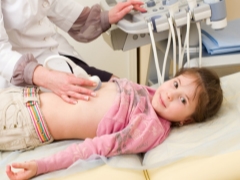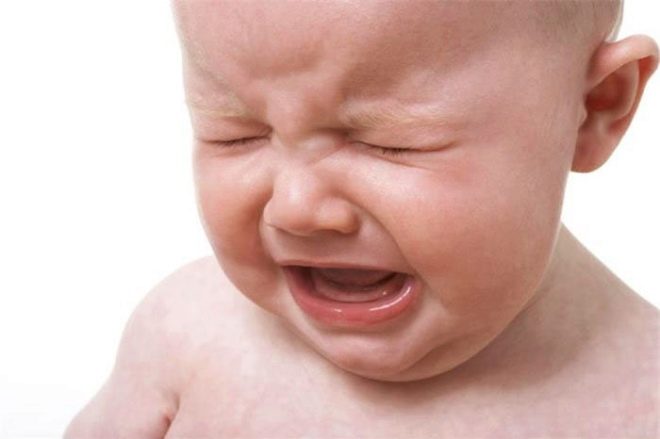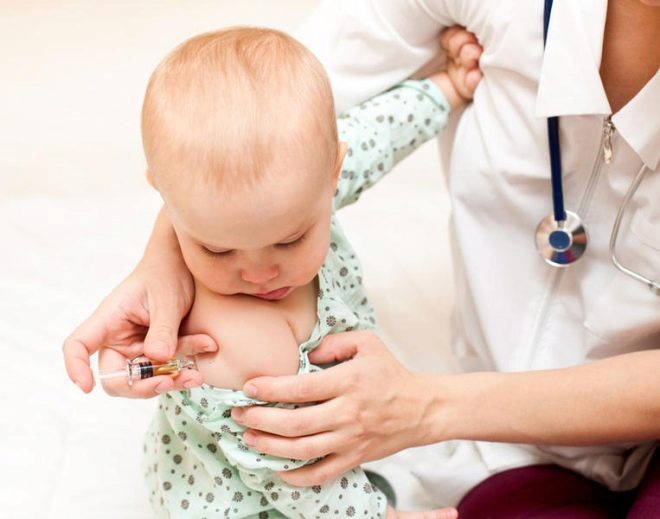What if the spleen is enlarged in a child?
Any deviation from the norms in the development of the internal organs of a child is alarming and frightening parents. Quite often, moms and dads hear from a doctor that a child has an enlarged spleen. After reading this article, you will learn what it can tell you what to do if the child has an enlarged spleen.
Special features
The spleen is located in the abdominal cavity. It consists entirely of lymphoid tissue and is involved in immune and other important processes. Although this organ does not belong to vital (a person can live without it), the value of the spleen for the body is difficult to overestimate. She participates in blood formation, being a direct participant in the creation of lymphocytes.
These cells are capable of destroying bacteria and viruses that enter the body, and without them we cannot speak of the normal functioning of immunity. The spleen processes the old red blood cells (red blood cells), and then sends them to the liver, thereby contributing to the production of bile, which is necessary for digestion.
This organ accumulates platelets. About a third of all platelets is due to the spleen. Indirectly, the body is also involved in the hormonal regulation of bone marrow activity.
Age
The spleen begins to appear in the fetus at the earliest gestational age — at 5-6 weeks after fertilization. This process ends by the fifth month of pregnancy. If at this crucial stage the negative factors affect the fetus (bad habits of the mother, genetic “malfunctions”, toxins, acute infection, which the expectant mother is ill with), then developmental abilities of this organ are possible. Vices, as a rule, are of three types - complete absence of an organ or the presence of two or more spleens in one organismas well as kinks and pinch points.
In a newborn, the lymphoid organ has a rounded shape and weighs only about 9 g. By the age of life, the weight of this organ increases almost three times and is about 25-28 g. At 7 years old, the spleen of a child weighs more than 50 g, and at 16 years old - more than 160 g
The presence of a healthy, normally functioning spleen is very important for children, because children are more susceptible to viral and bacterial infections. Without the participation of the spleen, it will be much more difficult to resist diseases.
Normal size
The size of the spleen increases as the child grows. To assess the condition of this body, a table of permissible sizes is used. It’s not quite right to build on the child’s age Yearlings may have different height and weight. This means that the size of the spleen will vary.
It is much better to use a table compiled by pediatricians and approved by the Ministry of Health, which is repelled from the possible sizes for a particular growth of the child. As you can see, the range of sizes normally fluctuates quite widely. An error of five to six mm is quite normal oscillations.
Dimensions in normal should not be too different from those presented in the table. Any increase in the area of the spleen (15% of the norm and more) in infants, preschoolers or students must necessarily become the basis for medical diagnosis.
The reasons
If the child has an enlarged spleen, doctors talk about the phenomenon of splenomegaly. Independent primary diseases of the spleen are very rare.Usually, this organ grows in size with certain diseases, it is just one of the symptoms of the main disease.
The list of possible causes of splenomegaly is very extensive:
- infections of bacterial origin, including severe - sepsis or typhoid fever;
- blood diseases;
- liver pathologies (cirrhosis, cystic fibrosis, and others);
- severe chronic diseases - tuberculosis, syphilis;
- metabolic diseases;
- defects of the cardiovascular system;
- oncological diagnoses;
- benign tumors and masses, as well as cysts of the spleen itself.
The spleen itself, under various pathologies in the child’s body, can undergo various conditions, almost all of them are accompanied by an increase in lymphoid organ size:
- splenic infarction;
- abscesses (ulcers) in the organ cavity;
- organ inflammation;
- paralysis of the spleen muscular system.
There are diseases that are the undisputed leaders among the possible causes of splenomegaly in children. These are acute viral diseases: measles, rubella, chicken pox, mononucleosis, herpes infection and so on. In second place are inherited problems with metabolism.
Often there is a parasitic damage to the liver and intestines (some types of worms). At the same time, the spleen immediately "reacts" to the problem with a painful increase.
Find the cause of splenomegaly is very important, without this the correct treatment is impossible. After all, therapy is not based on reducing the spleen, but on eliminating the ailment that causes its growth. After this, the spleen will shrink itself.
It should be understood that the body suffers literally in the line of duty. The increase occurs when the immune load on the body increases significantly, and this is what happens in the process of disease.
Sometimes the cause of the abnormal organ enlargement lies in the fungal infection. In this case, both the lungs and the skin of the face and hands are usually affected.
Symptoms
Quickly guess that the child has an enlarged spleen is impossible. Usually the process of splenomegaly does not cause any clinical symptoms. The child may be tormented by the manifestations of other diseases that were primary to the enlarged spleen. Usually, parents will learn about splenomegaly only during the examination:
- For the inflammatory process manifestations such as frequent and rather prolonged diarrhea, slight nausea and occasional vomiting, pain under the ribs, and an increase in body temperature are characteristic of the spleen.
- Non-inflammatory processes in the spleen rarely cause pain during palpation. The temperature also usually remains normal. The skin in pathologies associated with an enlarged spleen may be pale, the child may become more tired, apathetic. At night, there may be increased sweating.
However, all these signs are indirect, ambiguous, and it is not possible to make this or that diagnosis only by the totality of symptoms in this case.
The child may not feel anything bad, but the spleen may be enlarged. This also happens quite often.
Diagnostics
Using the method of palpation of the spleen a lot of information can not be obtained. In adolescents, this organ is practically not palpable, and in young children, a slight excess of size is sometimes the norm.
The main diagnostic method, which allows to judge not only the size of the spleen, but also its structure, the presence of possible abscesses, cysts and tumors, is ultrasound diagnosis. An ultrasound of the abdominal organs will be sent by the doctor first.
However, measurements of a diagnostician using an ultrasound scanner alone are not a basis for a decision. The child will also have to pass tests:
- general blood analysis;
- detailed blood count;
- general urine analysis;
- feces analysis.
In order for the picture to be complete, sometimes there is a need to undergo a CT scan and visit a hematologist.
Danger
Splenomegaly itself is not so dangerous. Much more dangerous is the underlying disease that caused the enlargement of the spleen.
In relation to the children's body, which is in a state of intensive growth, a significant increase in the spleen leads to pressure on neighboring organs, including the stomach. Digestion is disturbed, as well as metabolic processes.
If the spleen does not work correctly, then blood problems are not excluded - from simple hemoglobin deficiency to more serious diagnoses. The most dangerous is the development of hypersplenism - the massive destruction of blood cells in the spleen. Depending on which cells die the most, they differentiate between leukopenia (with leukocyte death), thrombocytopenia (with platelet death) and anemia (with red blood cell and oxygen-carrying proteins).
If the spleen itself has venous blood stasis, cysts and formations that are prone to growth, then the main risk is rupture and subsequent hemorrhage into the abdominal cavity.
Treatment
Having discovered an enlarged spleen in a newborn baby, the doctor will not rush to conclusions. In infants, the size of the spleen is directly related to how intensively the blood circulation is carried out - the stronger the body is filled with blood, the larger its size.
In all other cases, splenomegaly necessarily need medical help. Since the diagnosis is carried out not so much to determine the size of the spleen, as to search for the true cause of its pathological growth, by the time the treatment is prescribed, the doctor will know exactly which disease caused the symptoms.
The efforts of doctors will be directed to the treatment of the main disease. If splenomegaly is based on bacterial infection or a strong inflammatory process caused by microbes, a course of antibiotic treatment will be prescribed.
Diseases associated with tumors will be treated, depending on the size and location of the tumor, with anti-tumor agents or by surgery. Doctors always add therapy with vitamins. When autoimmune causes of splenomegaly prescribe immunosuppressants - drugs that suppress the activity of the immune system.
As a rule, the problem can be safely resolved in a conservative way. If, in the treatment of the underlying disease, the size of the spleen does not decrease as it recovers, if there is a tendency for the organ to grow further, a decision may be made to remove it.
Spleen is removed immediately (without prior treatment) for lymphogranulomatosis - A malignant disease of the lymphoid tissue, as well as almost always when its size is so large and the tissue is so thin that there is a risk of a sudden rupture of the organ.
Spleen excision surgery - splenectomy. Most often for children it is performed by laparoscopic method, which is the most gentle, almost bloodless and favorable (in terms of further recovery). There are also other methods of surgical intervention, but they are all associated with direct access to the spleen through a direct incision of the peritoneum.
After the operation, the child’s immunity is sharply reduced, the baby becomes extremely susceptible to infections, both of bacterial and viral origin. Bacteria are of particular danger to him, so children after surgery to remove the spleen must be entered into a personal plan. vaccinations against meningococcus, pneumococcus and hemophilus bacilli.
It should be noted that the decrease in immunity will be temporary, usually the body can compensate for the absence of an organ in a year or two.
The child will get sick much less often, his life will be fully valuable, without significant restrictions.
Prevention
Specific prevention of problems with the spleen does not exist, but there are measures that will help protect the child from the pathological increase of this organ:
- Baby from birth must be on time and fully vaccinated. Refusal of the vaccine increases the risk of infection with dangerous infections, which the child’s body cannot cope with without harming the spleen.
- If you plan to travel to distant exotic countries, you need to ask on the website of Rospotrebnadzor, what specific diseases are common at the destination.
It will be necessary to vaccinate the child in advance. Such vaccines (for example, for malaria) are not included in the national immunization schedule. They are made in private clinics - at their own expense.
- If the child is engaged in active or power sports, you need to explain to him the harm from excessive physical exertion. Understanding this can save the child from traumatic rupture of the spleen.
- Teenagers should stop smoking and taking alcohol, because such bad habits increase the load on the spleen. Its increase may even develop from ARVI.
- The child must attend the pediatrician on time., to abandon the planned techniques are not worth it. Early diagnosis of problems with an enlarged spleen will quickly cure the underlying disease and preserve the organ.




























